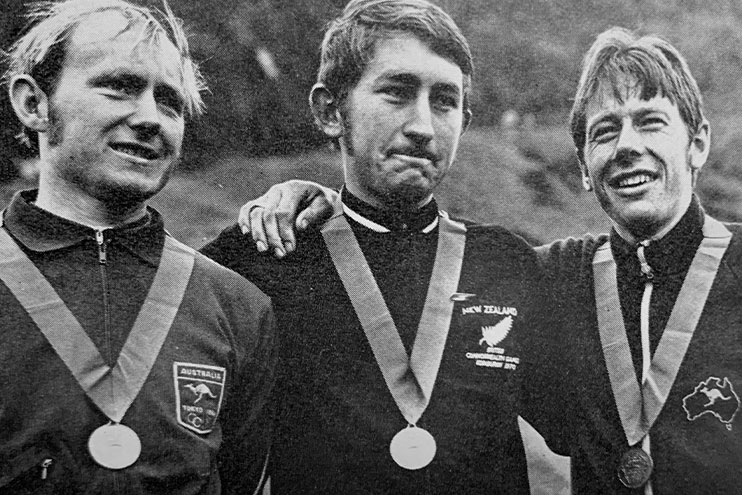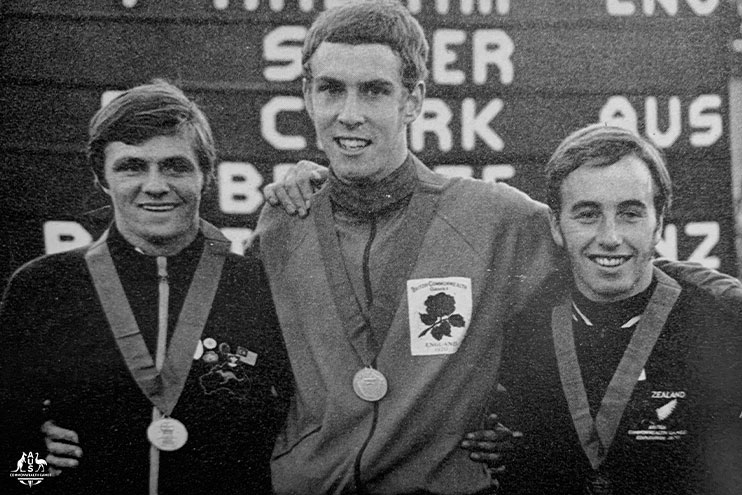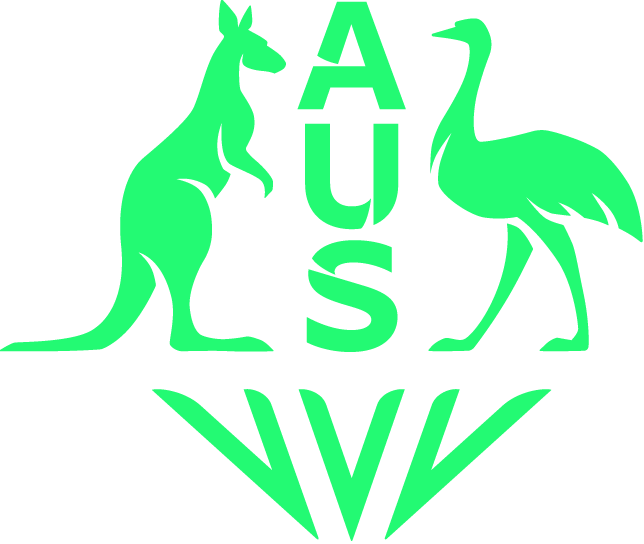
By Ian Hanson
Bike riders are a tough breed and occasionally, especially in Australian sport, that toughness is often coupled with larrikinism.
Former Australian champion road rider extraordinaire, Edinburgh 1970 British Commonwealth Games bronze medallist and Munich 1972 Olympian John Trevorrow proudly ticks all of those boxes.
Trevorrow remains one of Australian cycling’s great characters, certainly living up to the loveable larrikin tag, but also the toughness. John is a cancer survivor who after years of battling the vicious disease is now in remission and back in the saddle at the age of 71.
But some 50-years ago, a young Trevorrow nicknamed “Iffy” was riding along the lush green and rain-swept hills around Edinburgh’s Royal Mile and joining in the athlete village shenanigans with a bunch of Aussie youths, as the champion cyclist takes us back to the 1970 British Commonwealth Games.
Heading to Scotland was a significant moment in the career of the then 21-year-old. Born in Morwell in the Latrobe Valley district of the Gippsland, some 150 kilometres southeast of Melbourne, a young John grew up listening to stories of bike races from his dad Joe.
“He was a legendary bloke all 5’ 2” of him… a red-headed bundle of energy,” John recalled.
“Dad was a rider and we used to have Sun Tour riders staying in our house, so as a four, five and six-year-old I was listening to their stories.”
The Sun Tour is one of Australia’s oldest cycling races, the six-day tour began in October, 1952, and tours provincial Victoria and metropolitan Melbourne.
“All I wanted to do was ride in the Sun Tour one day,” John said.
Not only did John achieve his dream of riding in the tour, he won three of them in 1975, 1977 and 1979. But after his own career on the bike, Trevorrow went on to become the proud race director of the now called Herald Sun Tour which he says is “pretty special.”
But it was the Games in Edinburgh which remains in Trevorrow’s treasure chest of memories as being extra special.
John became the first person from Morwell to gain Commonwealth Games selection and believes he might have been one of the first residents to travel overseas.
“Back in 1970, the Commonwealth Games was right up there with the Olympics,” recalled John after racking his bike after an hour-long ride around his beloved Geelong, where he has lived since leaving Morwell in the 80s.
“I went to the Olympics two years later… but I reckon I got more thrill out of going to that Commonwealth Games… I can remember the town getting excited that I was actually going overseas, just as much as going to the Games… because country people didn’t travel much… so everyone was very excited that I was actually going overseas.”
Trevorrow will never forget just how tough the 1970 road race was. Held on the final day of the Games, the 105-mile race (169km) had over 102 miles (164km) of climbing and it never stopped raining.
The Men’s Road Race at the Edinburgh Games. (CGA Archive)
“It was a tough circuit around Arthur’s Seat, on the edge of Edinburgh along the Royal Mile where the Holyrood Palace sits,” John said.
The Palace of Holyroodhouse is The Queen’s residence in Scotland, Queen Elizabeth II granted the Games organisers permission to allow the road race to tour the gardens of the palace.
“We went up and down that hill… only about five or six kilometres around… but we had to climb the hill about 30 times,” John said.
“As it turned out I could climb a hill okay but I remember fellow Australian, the great Dick Paris was going to be in the race and he was a fantastic bike rider who had been on the track team in the 1964 Olympics in Tokyo, and ended up winning a gold medal on the track four years later at the Commonwealth Games in Christchurch in 1974 when he beat John Nicholson in the Time Trial.
“But as soon as Dick saw the road race course he said, ‘I can’t get round there’, and he pulled out of the race.”
Besides the never-ending circuit of inclines ahead of them, it was the relentless weather which challenged the riders. But Trevorrow recounts the race proved to be hotly contested in the driving rain.
“It rained for most of the day… it was terrible,” John said.
“But I remember a group went up the road with none of the favourites in it, about with 10 or 12 guys and they got a bit of a gap, but Bilney was still with me in the pack.
“Ray Bilney had made a comeback for Edinburgh, he had finished fourth in the Olympic road race in Tokyo in 1964 and missed out on the Olympics team in 1968.”
“Then Bilney and the New Zealander Bruce Biddle, took off and gave chase and I thought I am not letting them go, so I jumped up and caught them.
“The three of us caught the breakaway group and then within a lap or so we dropped all of them.
“But there was a chase from the main group led by the race favourite, the Pom Doug Rollinson, along with some good bike riders and a few Canadians chasing us as well.
“It was like a pursuit for quite a while and it developed into a great race.
“Bilney and Biddle cracked me [left me behind] coming around for the bell lap up the hill with one-and-a-half laps to go.
“The Kiwi attacked and Bilney went with him, but I was done… I managed to hang on to get the bronze medal which was pretty special.”
But at the finishing line the race was decided by less than the length of a bike tyre.

The finish at the Men’s Road Race. (CGA Archive)
“Bilney only just got pipped by Biddle for the gold,” John said.
“But I reckon if they sprinted that finish another 50 times Ray would beat him every time.
“Bruce was very strong and Bilney was faster, but on that day it didn’t work and Biddle pipped him by a tyre… and I rolled in for third.”

John Trevorrow (right) won the bronze in the Men’s Road Race. (CGA Archive)
Trevorrow remembers the track cycling was also brilliant with a great rivalry playing out between famed sprinters and Australian teammates Gordon Johnson and a young John Nicholson, with the contests delivering some of the best races seen on a Games track.
“Johnson and Nicholson had battled earlier at the Victorian Sprint Championships and then again at the Australian Sprint Championships… and then the for the third time in Edinburgh… each one of the them saw some amazing racing,” Trevorrow said.
“Nicho was the victor each time but only by the barest of margins.”
The sprint event saw the two cyclists compete in two races, where Nicholson won both of them, in one race a photo finish, used at the Games for the first time, showed Nicholson had only won by one-one-hundredth of a second.

The photo finish in the Men’s Sprint. (CGA Archive)
“Then Gordon turned pro straight after Edinburgh and went on to win the world pro sprint crown in Leicester, in England, a few weeks later,” John said.
World cycling was different 50 years ago where cyclists who rode on the professional world track cycling circuit, were not allowed to compete at the Olympics or the Commonwealth Games which was strictly for amateur athletes.
But the race in Edinburgh which sticks out in Trevorrow’s memory best was a semi-final between Gordon Johnson and New Zealander Harry Kent who had won the 1,000m Time Trial event.
“Gordon roughed him up and ran him into the railing and Harry had his knuckles rubbing along the back fence,” Trevorrow said.
“No way was Gordon letting him past in the lead up to the bell lap and he didn’t, riding away to make the final.
“It was a ripper to watch.”
The Games also saw the international breakout performance of then 18-year-old Tasmanian Danny Clark, who won the silver medal in the 4,000m individual pursuit.

Danny Clark (left) won silver in the 4,000m Individual pursuit. (CGA Archive)
But then there was the fun of the Games, and of course there was the Australian larrikin reputation, which saw Trevorrow collect a few souvenirs.
“I’ve still got a Commonwealth Games flag somewhere which I managed to borrow,” said Trevorrow, who tells this story about one of his teammates, who shall remain nameless.
“They had a launch for the official opening of The Village which was probably a week or so before the start of the Games.
“Prince Philip, The Duke of Edinburgh was there with security everywhere and they were all looking towards the Duke as an Australian cyclist pinched the Royal number plate off the Duke’s Rolls Royce… which he still has in his possession to this day.”
And it just so happened Prince Philip made the medal presentation for the Men’s Road Race, with Trevorrow winking at The Duke as he thanked him for the medal.
These days “Iffy” Trevorrow, who gained his nick name as in ‘if only’ for his own brand of larrikinism, is more than happy to be back on his bike after recovering from the shock of Oesophageal cancer in 2013.
“I had the operation and managed to survive it and I’m as good as gold now,” John quipped.
“I was ridiculously over weight at the time, weighing in at over 100 kilos.
“I’m down to 70 kilograms so it was a good weight loss program although I wouldn’t recommend it to any one.
“But it worked for me.
“I actually went to the Tour de France that year in between my last chemo and radiation treatments… after the operation, there was a month’s gap, so I managed to get to the Tour.
“I went with my good mate, former Herald Sun sportswriter and editor Ron Reed, who was my nurse maid… can you imagine it?
“I’m back on the bike regularly now, only for an hour or so but loving it.
“I’m really healthy and I’m very lucky, I can virtually eat what I like… no fast foods of course… otherwise it’s great… and I can still manage to have a few beers.”
And reminisce about his crazy ride up and down those hills in Edinburgh 50 years ago.
John Trevorrow, the kid from Morwell, a true bronze Aussie, and remains Australian cycling’s loveable larrikin.


